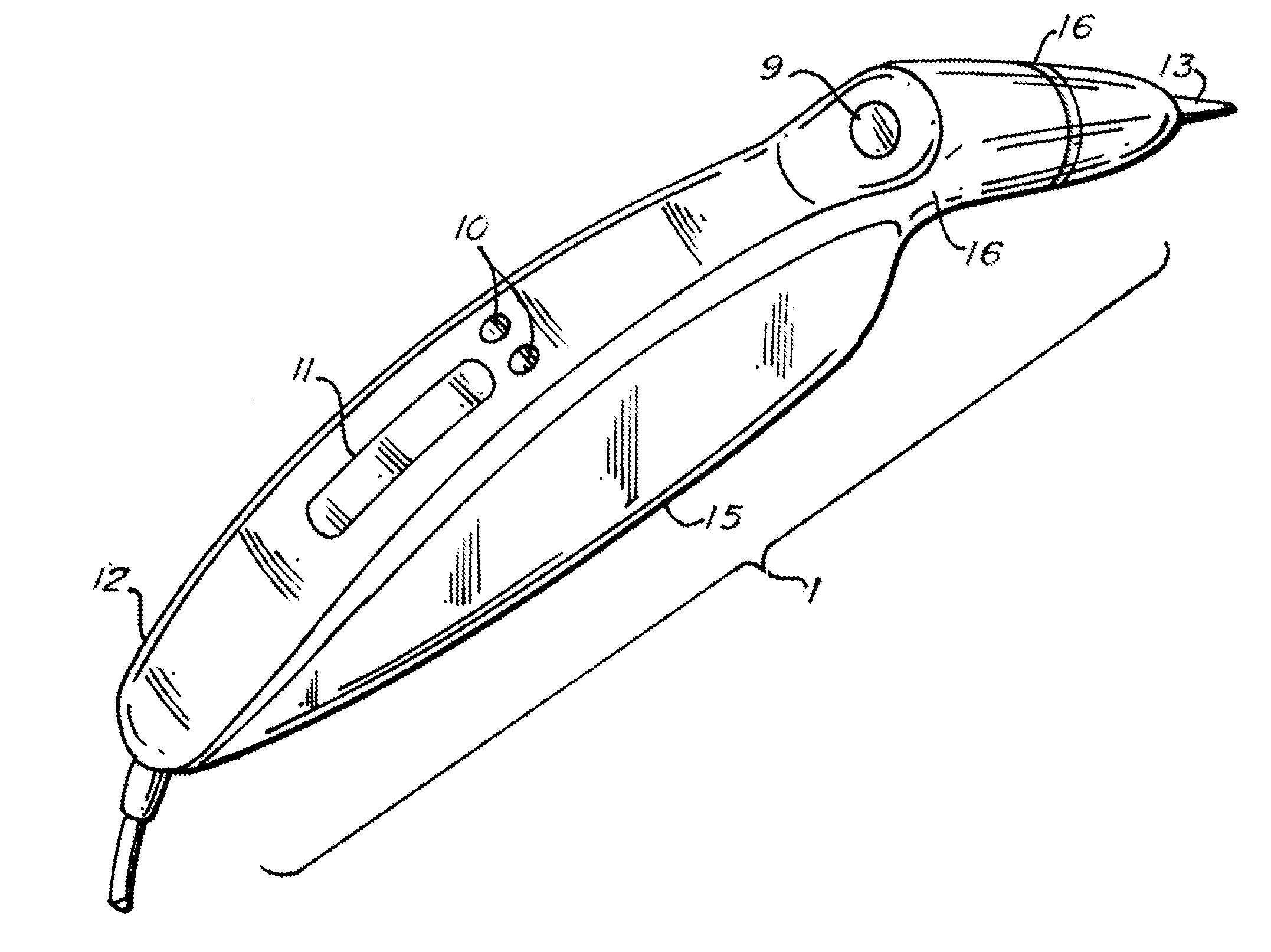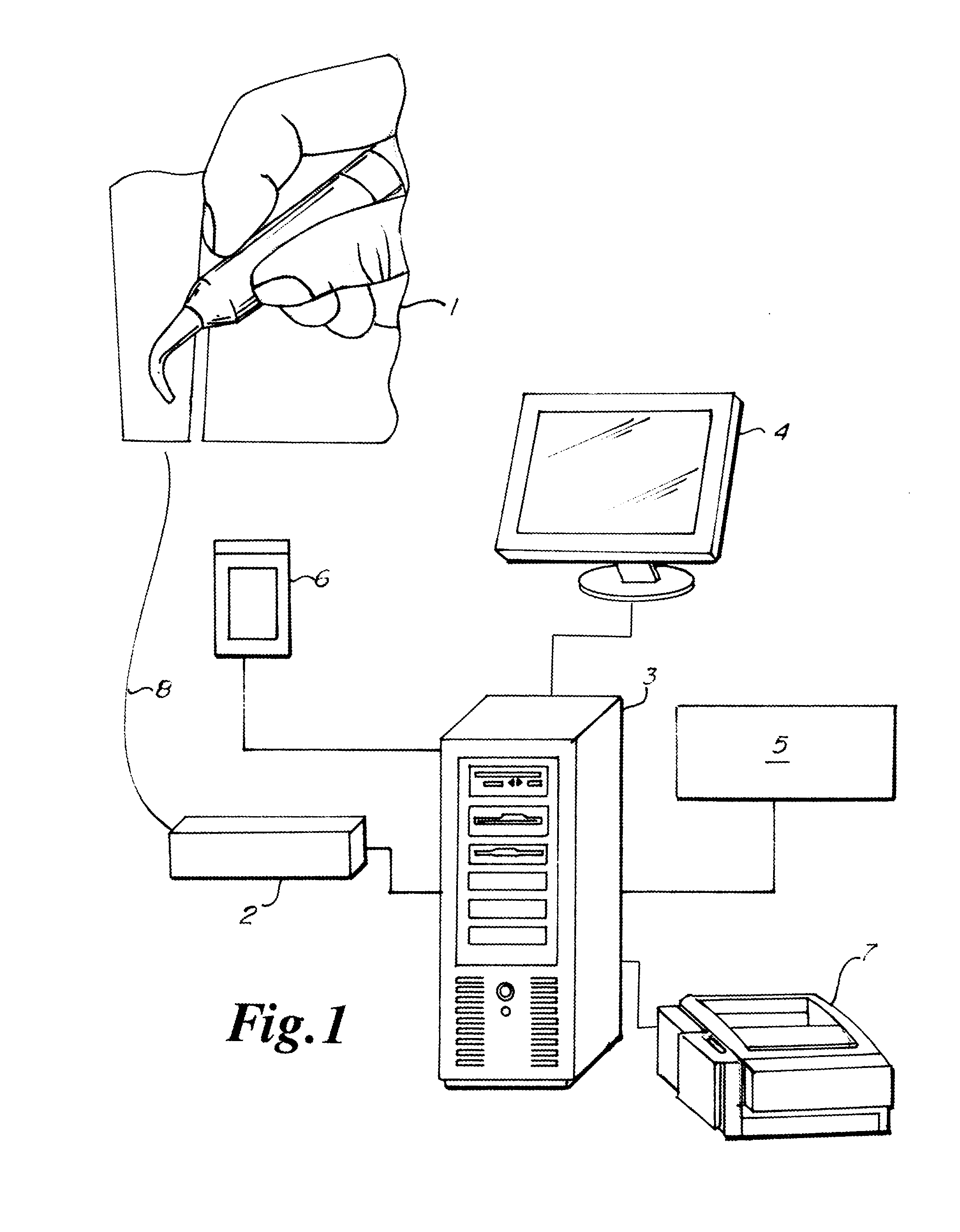Computer aided canal instrumentation system and a unique endodontic instrument design
a computer-aided canal and instrument design technology, applied in the field of endodontic procedures, can solve the problems of instrument fragments within the patient's teeth, endodontic instruments are prone to breakage, and endodontic instruments will break, so as to facilitate the removal of any broken parts
- Summary
- Abstract
- Description
- Claims
- Application Information
AI Technical Summary
Benefits of technology
Problems solved by technology
Method used
Image
Examples
Embodiment Construction
[0035]Endodontic instruments separate when forces from torsion (twisting) and bending fatigue overcome the instrument's ability to withstand such forces. Comparatively, instruments fare much better when subjected to tension (pulling) and compression (pushing) forces. Endodontic instruments also separate from misuse. They can be pushed too hard and pushed too fast. They can be over used or used at the wrong speed and torque. Canal instrumentation, or the cleaning and shaping for filling of a root canal, is fraught with problems such as instrumenting long or short, under or over enlarging the canal, ledging, zipping, perforating; most of which are caused by human error. This system controls these variables, eliminating human error, by applying an in-depth understanding of physics and metallurgy with computer aided technology.
[0036]FIG. 1 shows a system 17 for performing endodontic procedures. The key devices which comprise the system 17: a handpiece 1, drive and data cable 8, drive bo...
PUM
 Login to View More
Login to View More Abstract
Description
Claims
Application Information
 Login to View More
Login to View More - R&D
- Intellectual Property
- Life Sciences
- Materials
- Tech Scout
- Unparalleled Data Quality
- Higher Quality Content
- 60% Fewer Hallucinations
Browse by: Latest US Patents, China's latest patents, Technical Efficacy Thesaurus, Application Domain, Technology Topic, Popular Technical Reports.
© 2025 PatSnap. All rights reserved.Legal|Privacy policy|Modern Slavery Act Transparency Statement|Sitemap|About US| Contact US: help@patsnap.com



